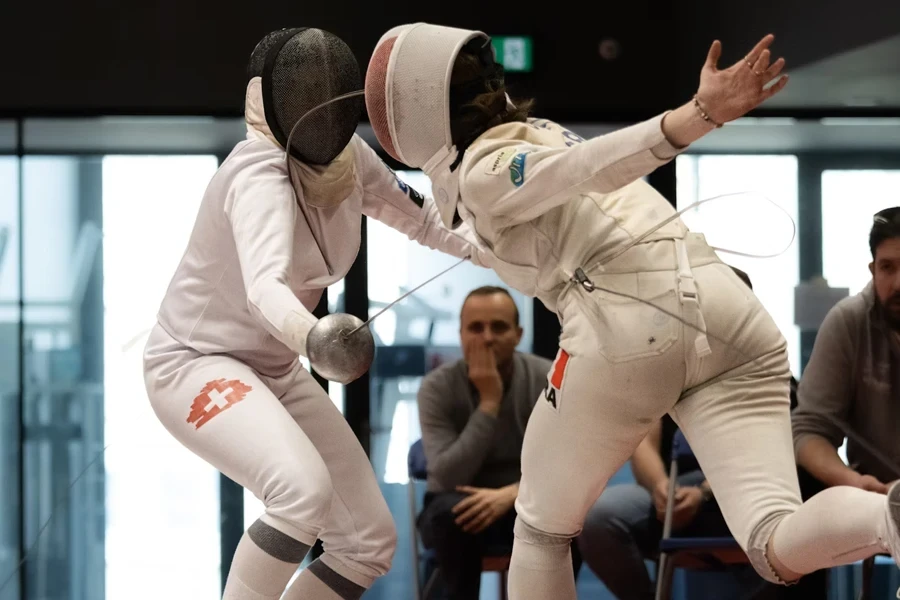Fencing gloves are an important accessory to help protect fencers’ hands from injuries while boosting precision and enhancing grip. Choosing the right fencing gloves can therefore make all the difference to overall performance, making them an important piece of kit.
Factors such as material, amount of padding, comfort, and style are all considerations that buyers will look for while looking for a new pair of fencing gloves. Read on to learn about each, helping you to choose the best fencing gloves for individual use or to sell as a business buyer.
Table of Contents
Global market value of fencing equipment
Factors to consider when choosing fencing gloves
Top three types of fencing gloves
Conclusion
Global market value of fencing equipment

Fencing has become increasingly popular, both at the recreational and professional levels, over the past decade. This is down to a number of factors, including growing emphasis on maintaining fitness and its relatively simple gameplay.
This year, the global market value of fencing equipment has reached USD 31.18 billion, and as fencing’s popularity continues to grow around the world, this number is projected to grow substantially. Between 2024 and 2031, the market is expected to witness a compound annual growth rate (CAGR) of at least 5.7%, bringing its total value to approximately USD 44.25 billion by 2031. Sales of fencing gear including bags, gloves, coach masks, and socks are helping to drive the market.
Factors to consider when choosing fencing gloves

Choosing the right fencing gloves is determined by individual preference as well as the type of fencing they’ll be used for. Here are some of the main factors that buyers are likely to weigh up when selecting the right gloves for them:
Material and padding
Fencing gloves should be made from durable materials and have enough padding to protect the hand. The most popular materials are synthetic blends or leather, as they provide the right combination of flexibility and power. Padding must protect the fingers and hand from the sword but allow for enough flexibility so that the user can grip the weapon effectively.
Fit and grip
Gloves should have a snug fit while also allowing for unrestricted movement. Padding by nature tends to restrict movement of the hand, though the user must still have complete control over the weapon. This is why the palm and fingers should be key reinforced areas, so as to prevent too much wear and tear. Size is also critical if fencers want to perform well.
Discipline
There are three different disciplines and swords used in fencing (foil, épée, and saber), so not all gloves are designed for the same purpose. Different disciplines require different levels of flexibility and protection, so the consumer must decide which is right for them.
Top three types of fencing gloves

The three fencing disciplines – foil, épée, and saber – require different gloves. Each type of glove is designed to meet the demands of their respective weapon, so there is a slight difference in design, material, and padding.
According to Google Ads, the term “fencing gloves” has an average monthly search volume of 1,600. Of these, the majority of searches – 18% of the total – occur in December and January. For the remainder of the year, searches remain between 1,300 and 1,600 per month.
Google Ads also shows that the most-searched-for types of fencing gloves are “saber gloves” at 170 searches followed by “foil gloves” at 70 searches, and “épée gloves” at 20 searches.
Below, we’ll take a closer look atthe key features of each.
Saber gloves

Saber gloves are designed to withstand the slashing that comes with saber fencing. They feature thick padding, particularly along the forearm and wrist, which protects the fencer from cutting strikes. These heavy-duty gloves are made from durable materials such as leather or synthetic blends to allow for both flexibility and longevity.
The grip, especially in the fingers and palms, is also reinforced to ensure secure handling. In addition, they may also feature a conductive material on the cuff, which is necessary for competitions where electronic scoring systems.
For competitive fencers, saber gloves must comply with International Fencing Federation standards when it comes to safety and durability. Higher-end gloves cost around USD 100, while recreational gloves can be as inexpensive as USD 30 depending on materials and brand.
Foil gloves

Foil fencing gloves, meanwhile, emphasize flexibility and precision control because of the lighter weapon used, meaning the gloves don’t have as much padding as other designs. Instead, foil gloves focus on grip and dexterity, with extra reinforcements on the fingers and palms to prevent slipping.
These gloves are made from leather or synthetic materials but on a much lighter scale than saber gloves. The breathable materials allow for ease of movement but still offer basic protection. What buyers like about foil gloves is their ability to mold to the hand after repeated use.
Foil gloves range from USD 20 to USD 80, depending on the quality of the materials used and the brand. Gloves that offer moisture-wicking properties and more advanced stitching, for example, will cost more due to their higher quality and better fit.
Épée gloves

Fencers in the épée discipline require gloves that are designed with a high degree of padding and offer protection against hard hits. The gloves therefore feature thicker padding and material around areas such as the wrist and hand to absorb impact from the heavier blade used.
These gloves are made from the same material as other fencing gloves but are designed to withstand repeated strikes while also offering flexibility. It’s common for these gloves to have reinforced stitching and padding to ensure a secure grip on the weapon while trying to score points.
As with the other types of gloves, the higher the price of épée gloves, the better the material. A tougher glove can reach up to USD 90, but beginner gloves can cost as little as USD 25. Buyers will look for other features such as moisture-wicking properties, precise fit, and breathability.
Conclusion
Choosing the correct fencing gloves depends on a number of factors, but the most important is which fencing disciple they’ll be used for. Some gloves offer more padding than others due to the heavy slashing that occurs, whereas others are designed more for flexibility and breathability.
Saber, foil, and épée gloves are the three main types of fencing gloves available, and their demand is increasing as the popularity of fencing rises globally. As a business buyer, you may also want to consider stocking signature products as well as more exclusive options that come with a case or feature a specific club’s logo.




